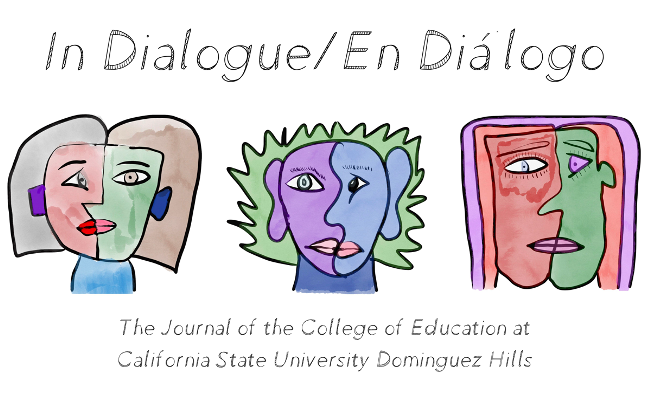Information For Authors
Interested in submitting to In Dialogue/ En Dialogo? We recommend that you first review the About the Journal page for the journal's section guidelines. Also, review the Announcements page for the most current Call for Submissions.
In Dialogue/ En Diálogo offers TWO TYPES OF REVIEWS for English/Multilingual submissions. Authors MUST identify the selected option on their manuscript (pg. 2):
Option 1: double blind traditional review which includes two peer-reviewers using scoring guidelines for faculty (tenure track and non-tenure track in any system of higher education), researchers, and those wanting a traditional peer review (e.g., graduate students, doctoral candidates, staff etc.).
Option 2: double blind modified review which includes two peer-reviewers using modified scoring guidelines for voices from the field that can include faculty not at higher educational systems, educational leaders, community members, any PreK-20 practitioner, staff, undergraduate students. Whenever possible, peer reviewers will be matched with authors with similar professional backgrounds/contexts.
About the Review Process
Reviewers of In Dialogue/En Diálogo are tasked with upholding the journal’s mission to integrate theory and practice through the multi-voiced discourse of PreK-20 researchers, teachers, administrators, students, staff, and community members to capture evolution of thought and practice. The journal aims to embrace the messiness of efforts for justice within and through education while centering voices of those who have traditionally been marginalized from academic conversations. Each volume presents a (sometimes multilingual) snapshot of contemporary, research-informed conversations and practices and captures pivotal moments that strengthen collective critical consciousness.
The review process is managed through the web-based platform Open Journal System(OJS). Each submission (including all empirical research articles, essays, theoretical thought and opinion pieces, reflections on pivotal moments of transformation, how-to pieces, curriculum analysis, personal narratives, book reviews, and creative contributions) is sent to two reviewers from the journal’s Review Board. The full review process takes approximately 3 months.
Authors may be asked to revise and resubmit, depending on the reviewers’ comments. Authors can track where their submission is in the review process on the OJS platform. Decisions about acceptance will be communicated to the authors from the editors. Two volumes of the journal will be published annually, in the fall and in the spring.
In addition, please review the Author Guidelines. These guidelines provide additional manuscript formatting information.
1. To submit a manuscript, authors need to register and create a password-protected account through the journal's website. If already registered, authors can simply log in and begin the five-step process which includes identifying the section the submission is for (Perspectives 1-4).
2. All manuscripts, including creative works, should include a brief abstract (150 words or less) and a list of no more than 5 key words that describe the scope of the work (listed in order of importance). The ideal manuscript length is between 1,500 and 3,000 words, including references, abstract, tables/figures, and appendixes. However, manuscripts should not exceed 5,000 words.
3. These types of submissions are welcome: empirical research articles (privileging critical methodologies), essays, theoretical thought and opinion pieces, reflections on pivotal moments of transformation, how-to pieces, curriculum analysis, personal narratives, book reviews, and creative contributions.
4. Authors' names and identifying information should not appear on the manuscript itself to ensure blind review process. The title, type of submission, abstract, key words, author information, preferred review process (Option 1 traditional peer review/ Option 2 modified peer review) and word count should be included according to the directions found in Author Guidelines.
5. The structure of each submission is up to the discretion of the author. However, empirical research articles most commonly include the following sections: Introductions (no heading for this), Review of Literature, Methodology, Theoretical Framework, Findings, Discussion, Conclusion.
6. Submit your manuscript, including tables, figures, appendices, etc., as a single file. For written submissions, submit in Word format. For creative submissions, follow instructions found in Author Guidelines.

